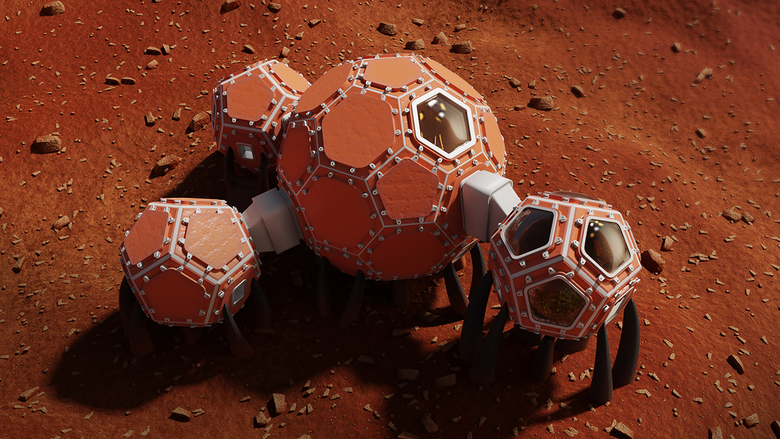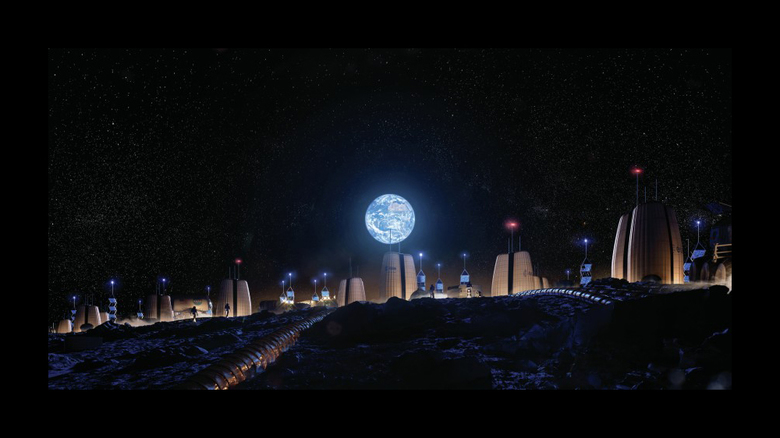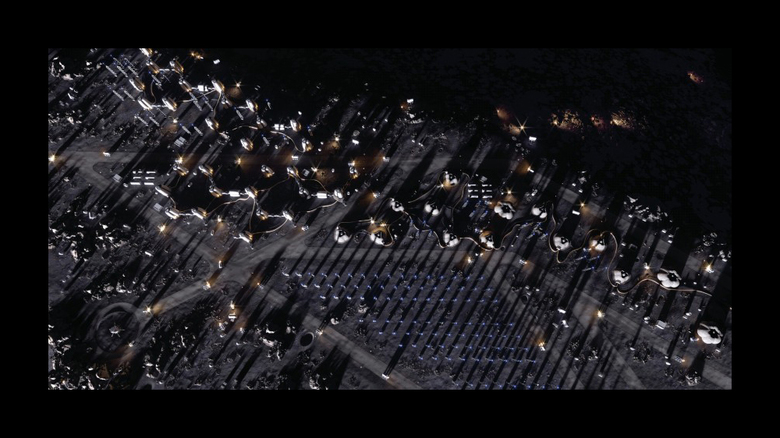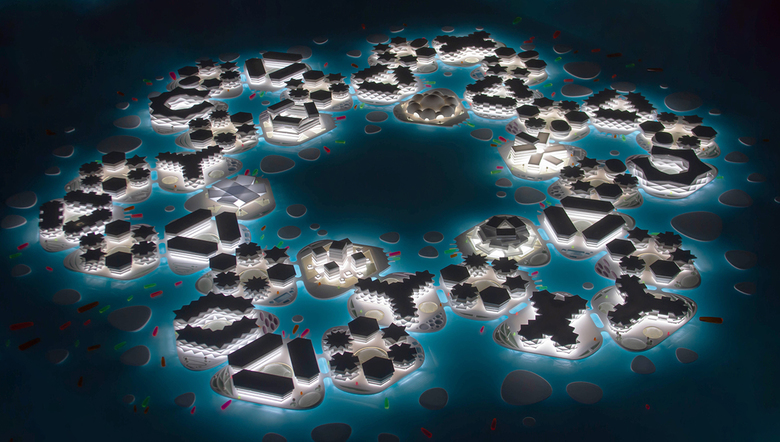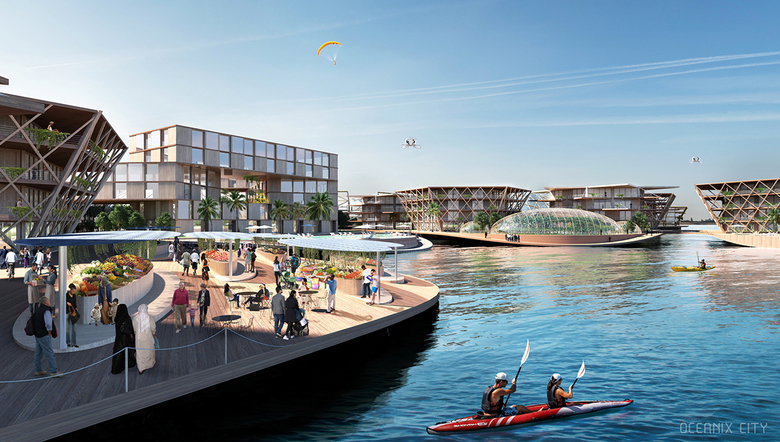Abandon Earth?
A trio of recently unveiled projects sees architects designing for futures removed from terra firma, looking wayward to Mars, the Moon, and the surface of our vast oceans.
NASA's 3D-Printed Habitat Challenge, SOM's proposal for the first permanent human settlement on the Moon, and BIG's plan for the world’s first resilient and sustainable floating community come about 60 years after Hannah Arendt's 1958 book The Human Condition. I'm reminded of her classic study of the state of humanity at mid-century because she explains how her book was a response to people expressing joy that the launch of Sputnik the previous year was "a first step toward escape from men's imprisonment to the earth." Exciting as the space race was, it shifted the priorities of people away from Earth, what Arendt described as "a habitat in which [people] can move and breathe without effort and without artifice." With climate change, population growth, extreme inequality, and other issues making it hard to be optimistic about the future of life on our planet, people are once again shifting their gaze to the heavens, and in one instance described below, to the oceans. Are these visions our future? Or are they signs we have given up on the land that has nurtured us for millennia and therefore we need another Arendt to correct our course?
NASA's 3D-Printed Habitat Challenge
In 2015 NASA launched its multi-phase, $3.15 million 3D-Printed Habitat Challenge, which asked entrants to design and build "a 3D-printed habitat for deep space exploration," particularly for NASA's journey to Mars. It was developed "to advance the construction technology needed to create sustainable housing solutions for Earth and beyond."
The most recent, third phase challenged teams to create complete virtual habitat designs. Three teams were awarded from the eleven competing teams — SEArch+/Apis Cor, Zopherus, and Mars Incubator — with SEArch+/Apis Cor (image at top) winning first place.
The virtual competition was the fourth of five stages in the Challenge's third phase. Next, the three winning teams from stage four will head to the Caterpillar Edwards Demonstration and Learning Center in Illinois in early May to 3D-print scale versions of their martian habitats and the conclusion of the 3D-Printed Habitat Challenge.
SOM's Moon Village
Fifty years after Apollo 11 landed on the Moon, the European Space Agency (ESA) has developed a concept for the first full-time human habitat on the lunar surface. Working with the ESA and MIT's Aerospace Engineering Department, Skidmore, Owings & Merrill (SOM) has unveiled its designs for what is being called Moon Village.
The cluster of pressurized modules about three or four stories tall would be located on the rim of Shackleton Crater near the Moon's South Pole, ensuring near continuous daylight. Solar energy would power the Village and aid in food generation, while water would be extracted from the crater's water-ice deposits.
Not surprisingly, the Moon Village is spelled out in SOM's press release as not only "an opportunity to explore the Moon in its entirety," but also "a stepping stone to achieve even greater ambitions: extending the human footprint to Mars and beyond."
BIG's Oceanix City
Back on Earth, but still removed from terra firma, BIG – Bjarke Ingels Group recently presented its design for Oceanix City to UN-Habitat. With "unfettered coastal urbanization ... destroying millions of hectares of the ocean and marine life," and with "close to 50 percent of people in the world live in coastal areas," Oceanix thinks humanity's resilient future will be on the oceans.
BIG's design for Oceanix City is made up of modular 2-hectare "neighborhoods" for up to 300 residents. Fractal-like conglomerations of neighborhoods would form "villages" that would add up to a city of 10,000 residents on 75 hectares, making Oceanix City a little bit denser than New York City but considerably more exclusive.
Food would be provided by a mix of ocean farming, aeroponics, aquaponics, and indoor/outdoor farms; waste would be accommodated via a number of high- and low-tech systems (anaerobic digestors, algae filtration, compost gardens, treatment swales); water would be collected from the atmosphere via various methods; and energy would be drawn from the sun, winds, and waves. All are commendable, but can't many of those be applied to the places where we already live?


